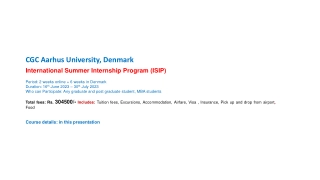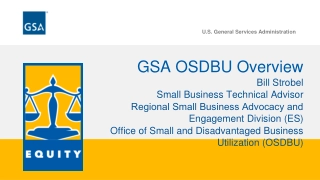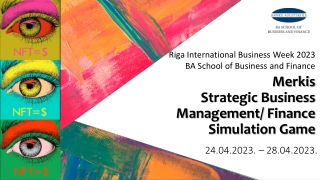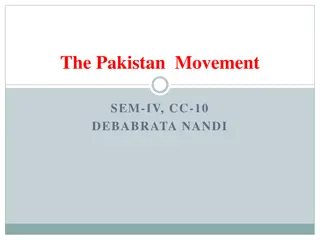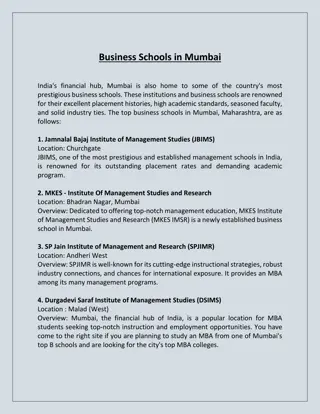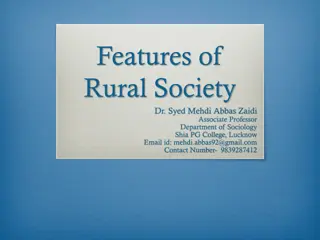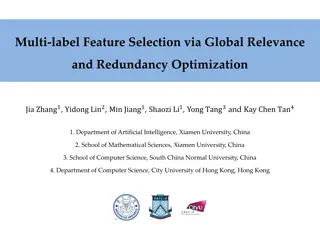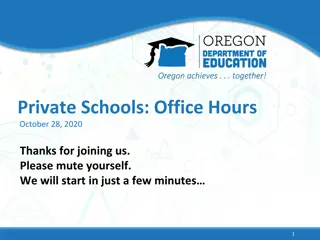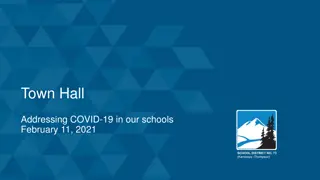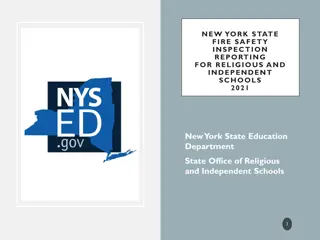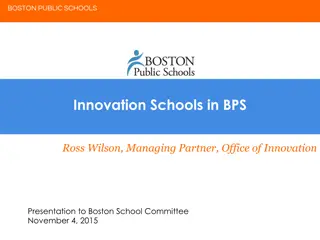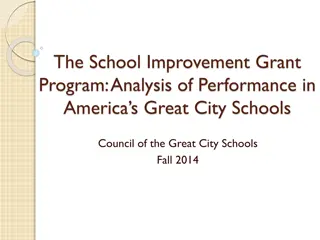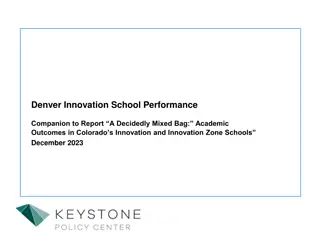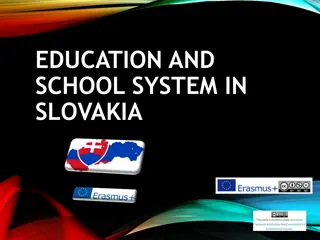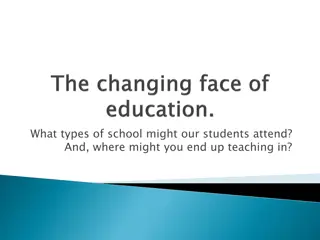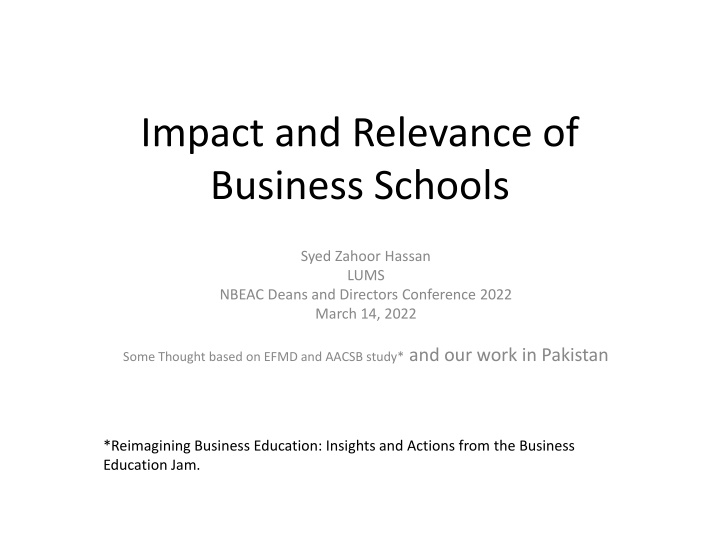
Enhancing Business Education and Industry Engagement in Pakistan
Explore the challenges and opportunities in business education at the Deans and Directors Conference 2022. Discover the significance of university-industry-community linkages and strategies for revitalizing curriculum relevancy and industry collaboration in Pakistan.
Download Presentation

Please find below an Image/Link to download the presentation.
The content on the website is provided AS IS for your information and personal use only. It may not be sold, licensed, or shared on other websites without obtaining consent from the author. If you encounter any issues during the download, it is possible that the publisher has removed the file from their server.
You are allowed to download the files provided on this website for personal or commercial use, subject to the condition that they are used lawfully. All files are the property of their respective owners.
The content on the website is provided AS IS for your information and personal use only. It may not be sold, licensed, or shared on other websites without obtaining consent from the author.
E N D
Presentation Transcript
Impact and Relevance of Business Schools Syed Zahoor Hassan LUMS NBEAC Deans and Directors Conference 2022 March 14, 2022 Some Thought based on EFMD and AACSB study* and our work in Pakistan *Reimagining Business Education: Insights and Actions from the Business Education Jam.
The Core Issue Huge Difference in perceptions higher education s self-perception and the perception of the customers (industry and society) Resistance to Change at all tiers of schools Elite school: lack of motivation Mid-Tier: Lack of resources and courage Third Tier: New programs based on old model Need to revisit the three Rs: Relevance : Faculty, Curricula, Linkages Reach: industries, students, partnerships Respect: Students, employers and society as partners
University, Industry and Community Linkages State of University, Industry and Community Linkages in Pakistan results from a field study of 20+ institutions - Key Dimensions of Analysis for each institution: Over all philosophy and focus Role of industry and community in: Governance and strategic decision making Program and curriculum design and development Teaching and learning processes and activities Mentoring, coaching, career guidance and job placement Special assessment of the role of alumni Main Findings: Most universities have some form of linkages with industry but very few have engaged actively with community, and most linkages are based on informal mechanisms NUST emerged as one institution that had developed the most comprehensive and formal approach to establishing linkages with industry, community and government. 3
University, Industry and Community Linkages Leveraging Industry and Community Resources to make the University's Plans more relevant Participation Universities numbered 1 through 14 16 Industry perspective 14 12 10 8 6 4 2 0 1 1.5 2 2.5 3 3.5 4 4.5 5 5.5 6 6.5 7 7.5 8 8.5 9 9.5 10 Survey Scale 1 to 10 The broken line represents an average of about 6 The red dot shows industry perception: 3 4
University, Industry and Community Linkages Use of Industry and Community Resources to Design specific programs and curricula Participation Universities numbered 1 through 14 16 industry perspective 14 12 10 8 6 4 2 0 1 1.5 2 2.5 3 3.5 4 4.5 5 5.5 6 6.5 7 7.5 8 8.5 9 9.5 10 Survey Scale 1 to 10 The broken line represents an average of about 6 The red dot shows industry perception: 3 5
University, Industry and Community Linkages Use of Industry and Community Resources in Mentoring and Placement Participation Universities numbered 1 through 14 12 industry perspective 10 8 6 4 2 0 1 1.5 2 2.5 3 3.5 4 4.5 5 5.5 6 6.5 7 7.5 8 8.5 9 9.5 10 Survey Scale 1 to 10 The broken line represents an average of about 6 The red dot shows industry perception: 4.5 6
University, Industry and Community Linkages Difference in Perception between Academicians and Practitioners Academic Perspective Practitioner Perspective Leveraging community and industry to make your university s long term plans and strategy more in line with the needs of society and industry Use of industry and community resources for designing of specific programs, courses and curriculum components Use of industry and community in mentoring, coaching, career guidance and job placement 6 3 6 3 6 4.5 Clearly there is difference of perceptions! 7
The Critical Questions The Global Mindset Balance between local requirements and globalization compulsions The Relevance Deficit The Disruptive Deficit The Reputation Game: Rankings? Accreditation? The Leadership skills Deficit: Value-based leadership? The change mindset: Stuck in theory The Humanistic Deficit: Ethics and personal development The innovation Deficit: Developing Entrepreneurs?
What could be done Open Innovation: Enhance Innovation through opening to external stakeholders: Suppliers, Partners and customers Three key characteristics of open innovation People Problems Processes and tools Engage with large number of people as partners
Problems to focus The theory-practice gap Teaching versus research Applied versus theoretical Experiential vs. Existing pedagogy Real world vs. narrow theory Specialization and integration tension Experimental and learning cycle time Case study method Software example as guide: Products>Services> Platforms Partnered-based learning and research Joint program development with industry Curricula changes as students engage with industry (70-30)
The core questions Distinctive value for stakeholders Value to students economic returns? Value to Employers skills, capabilities and attitudes? Value to the society and world? Distinctive pedagogy? Distinctive research contributions? Distinctive Impact
What could be done? Focus on engagement of all stakeholders in decision making: Governance, program design, program delivery and student mentoring Must set up formal mechanisms to establish partnerships with industry avoid ad-hoc approach Teaching, research and service Must have a focus on tackling the core issues of today inequality, environment, . SDG? It is about 7 Ps: people, philosophy, purpose, processes, provisions (resources), partnerships and progress (impact economic, social )

